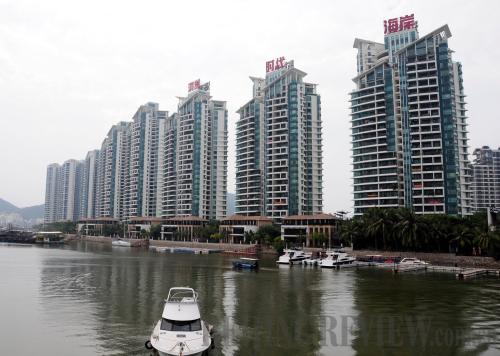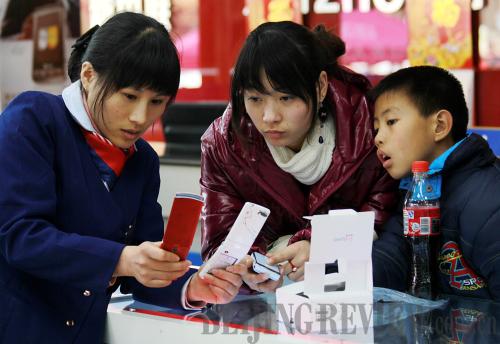|
 |
|
REAL ESTATE BOOM: In 2010, real estate investment in Hainan Province totaled 46.79 billion yuan ($7.07 billion), up 62.5 percent compared with 2009, the highest among all province-level regions. Pictured are residential buildings in Sanya, Hainan (WANG HUIYU) |
In a bid to spark consumer interest, policymakers handed out generous incentives, such as tax breaks for automobile purchases and heavy subsidies for home appliance buyers. Sales revenues under China's program to subsidize farmers' purchases of home appliances totaled 173.23 billion yuan ($26.1 billion) last year, up 170 percent from a year ago, said the Ministry of Finance.
The efforts also paid off as China retained its position as the world's largest auto market by selling a record 18 million units last year. But the red-hot market is expected to take a breather this year as the government rolls back some of the incentives.
An investing spree also helped coax the growth engine out of low gear. Investment in fixed assets surged 23.8 percent from the previous year to reach 27.8 trillion yuan ($4.2 trillion) in 2010.
"The massive investments have kept the industrial sector humming, and provided a floor under what would otherwise have become a deeper quagmire," said Zuo Xiaolei, chief economist at the China Galaxy Securities Co. Ltd. "Efforts are still needed to spur investments from the private sector, the biggest source of job creations."
The investment momentum is likely to taper off this year since most of the projects under the "4-trillion-yuan ($586-billion) stimulus program" have reached completion, said Lian Ping, an economist at the Bank of Communications Co. Ltd. In addition, the government has tightly controlled the property sector and the financing vehicles of local governments, putting a damper on many local projects, he said.
Foreign trade picked up some of the slack as well. Exports soared 31.3 percent last year to $1.58 trillion, while imports surged 38.7 percent to $1.39 trillion, said the General Administration of Customs. The trade surplus was $183.1 billion, decreasing 6.4 percent.
Zhang Yansheng, Director of Research Institute of Foreign Economic Relations under the National Development and Reform Commission, predicted China's exports would maintain growth in 2011, but at a much slower pace, with the trade surplus continuing to shrink.
Inflation scare
As Western economies battle with deflationary forces, China is facing a different dilemma—inflation.
 |
|
BUYING SPREE: Consumers look at cellphones in Weihai, east coastal Shandong Province. Revenues for China's telecommunication businesses increased 6 percent in 2010 from a year ago, said the Ministry of Industry and Information Technology (YU QIBO) |
The consumer price index (CPI), a barometer of inflation, grew 3.3 percent in 2010, above the government's target of 3 percent. The index hit a 28-month high of 5.1 percent in November 2010, followed by 4.6 percent in December. The producer price index (PPI), a measure of inflation at the wholesale level, went up 5.5 percent in 2010.
The CPI was largely driven up by food prices, which leapt 7.2 percent last year. The prices of medical and personal products went up 3.2 percent while residential products rose 4.5 percent.
A considerable amount of cash is sloshing around the Chinese economy because of two years of heavy lending, fueling consumer prices across the country. New loans denominated in renminbi added up to 7.95 trillion yuan ($1.2 trillion) in 2010, overshooting the government-set target of 7.5 trillion yuan ($1.1 trillion).
As it punched the banks' ability to lend, China attempted to tame the credit tiger. The People's Bank of China, the central bank, has ordered to raise the ratio of deposits commercial banks must put aside in reserves seven times since 2010. It also hiked interest rates twice last year, bidding farewell to the previously loose monetary stance.
"Given that food prices are spearheading immediate inflationary pressures, supply-side measures should be more effective than rate hikes," said Qu Hongbin, HSBC's chief economist in China. "There's no need to panic, as China has more than enough powerful policy options to combat inflation."
Wu Xiaoling, former Director of the State Administration of Foreign Exchange, said China must ratchet up efforts to shield the economy from speculative money inflows fanned by quantitative easing in the United States.
| 